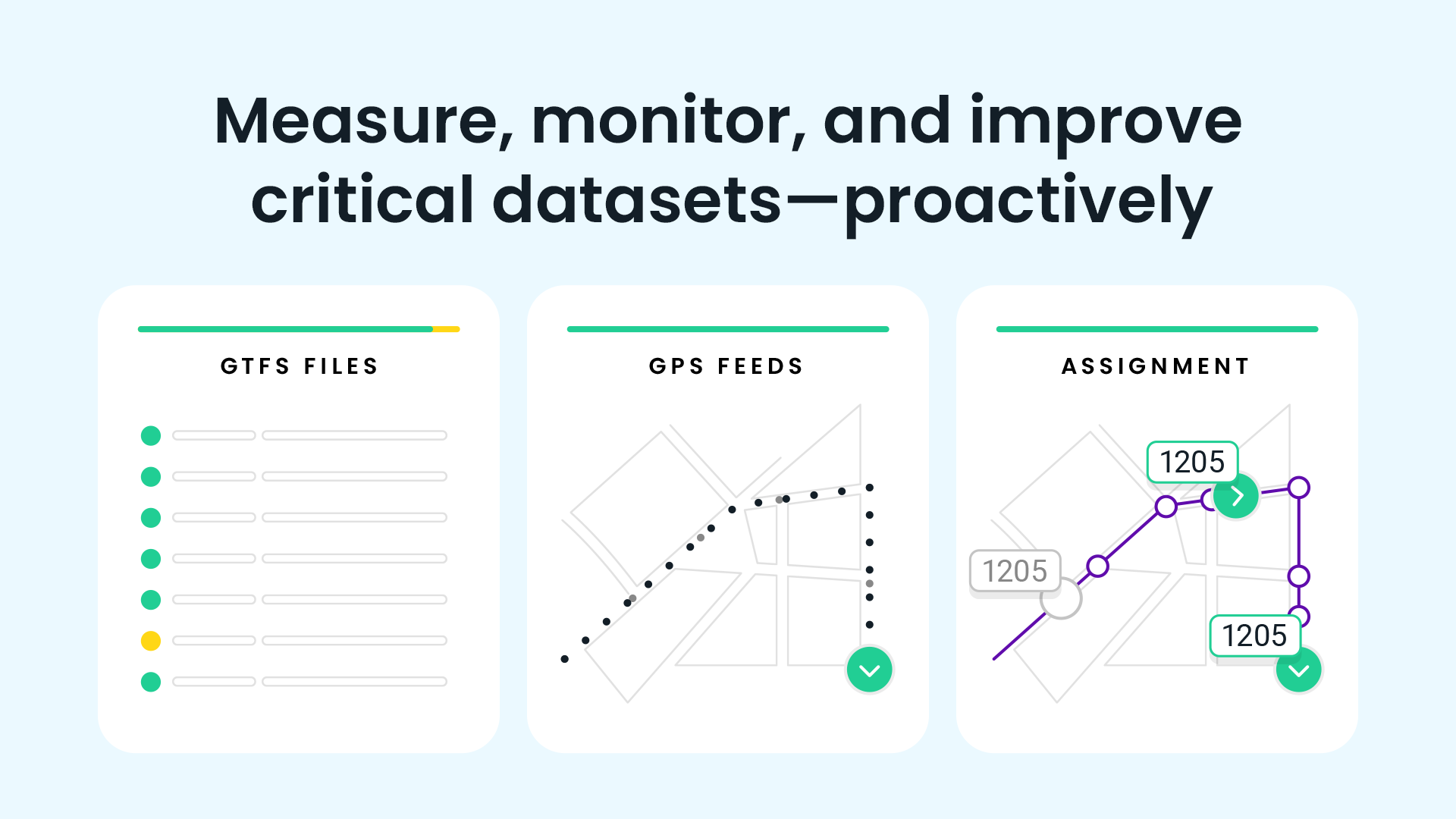
June 23, 2025
Strætó improves real-time passenger information for tourists and locals with Swiftly

June 23, 2025
Strætó improves real-time passenger information for tourists and locals with Swiftly
June 23, 2025
Strætó improves real-time passenger information for tourists and locals with Swiftly
Strætó, the public transit authority serving Reykjavík and surrounding areas in Iceland, operates in a uniquely demanding environment. With severe winter weather and routes serving the surrounding countryside providing less frequent service, riders depend on reliable real-time passenger information to navigate the system. Reykjavík is also a global destination, drawing visitors to the city and surrounding nature attractions. To meet the expectations of both residents and tourists, Strætó turned to Swiftly to deliver more accurate, accessible, and scalable real-time information—without burdening their IT team.
“Reykjavík is a very widespread city, which means that public transportation can be infrequent in outer areas. We don’t want people to wait for half an hour in the cold. That makes reliable ETAs even more important.”
—Daði Áslaugarson, Head of IT at Strætó
We previously wrote about how Strætó’s planning team uses Swiftly’s historical data to improve on-time performance by 20%. You can view that case study to learn more about the project.
Barriers to communicating real-time passenger information
Before deploying real-time passenger information with Swiftly, Strætó’s real-time information was available only through its agency-owned mobile app and website, along with a handful of technology providers supported through custom integrations. While effective for local residents, this posed a major barrier for tourists unfamiliar with Iceland’s public transit navigation tools. Most international riders expected transit data to appear on platforms they already used—namely Google Maps and Apple Maps. The agency also struggled to proactively communicate trip cancellations or delays—especially on routes with no real-time feed at all.
“It was really important for us to get real-time information on Google’s platform,” said Áslaugarson. “Icelandic people may be used to our own app, but we need to get this information on Google for the tourists and the people that are used to that platform. The media actually noticed the information in Google Maps the day after it went live, which shows locals care about using Google as well, not just tourists.”

Meanwhile, Strætó’s technical staff faced steep demands from the fragmented transit technology ecosystem. Integrating with each third-party system required custom engineering work to manipulate static GTFS data for each different vendor. “We had been looking at producing our own GTFS real-time feed for Google, but we knew that would be a lot of work. Then we thought about doing the same with Apple and other systems. That slowed us down,” said Ragnar Hafstað, Senior IT Specialist at Strætó. “We don’t have a big developer team and cannot put endless resources on this. By using Swiftly, we can integrate with all other systems that are possible through this standard. Knowing we could get our data onto more than one platform made us eager to do the project.”
A scalable solution to meeting riders where they are
Strætó implemented Swiftly’s Real-Time Passenger Predictions and Rider Alerts tools to provide best-in-class real-time data through a standardized, scalable format.
The implementation unlocked far more than better ETAs. Within weeks of signing the agreement, Swiftly produced a GTFS-rt feed that integrated directly with Google Maps, Apple Maps, and other third-party tools. This ensures consistency across all rider-facing channels and eliminates the need for additional engineering from Strætó’s team. The agency can now manage one centralized GTFS dataset and direct all downstream systems—apps, signs, websites, and consultants—to the GTFS-rt feed that Swiftly generates. Strætó now receives three million monthly API requests for Swiftly data across 11 data consumers, including trip-planning apps, e-signage providers, and internal staff software.
“It’s not only the quality of real-time data that’s important, but also being able to communicate data in a structured and standardized way,” said Áslaugarson.
“Standardizing data with Swiftly is much faster and economical, both for us and for our data consumers everywhere. The project with Swiftly eases that communication and makes implementations with third parties infinitely faster and easier.”
—Daði Áslaugarson, Head of IT at Strætó
Launching Swiftly’s Rider Alerts allowed staff to proactively notify passengers of service disruptions—especially critical for rural or long-distance routes where GPS tracking is unavailable but accurate communication remains vital.
“Previously, we haven’t been able to send out notifications for routes when trips have been canceled or delayed,” said Áslaugarson. “With Swiftly’s Rider Alerts, it will be possible. Our marketing team is really, really looking forward to using this for service in rural areas.”
With Swiftly’s help, Strætó has built a real-time information technology strategy that can scale to meet evolving rider expectations—without additional operational strain. As summer tourism surges, the agency is ready to greet visitors. Internally, Strætó plans to further reduce system complexity by sunsetting legacy data feeds and streamlining its technology stack around Swiftly’s cloud-native platform.
While Strætó initially felt providing real-time information to third-party apps would be out of their reach, Áslaugarson was straightforward when asked how he would advise other agencies considering implementing modern transit data technology.
“My recommendation to other PTAs would be to just do it. Take the necessary measures to communicate through the channels that people are actually using.”
Request a demo
The rich text element allows you to create and format headings, paragraphs, blockquotes, images, and video all in one place instead of having to add and format them individually. Just double-click and easily create content.
Last Name, Agency

What’s a Rich Text element?
What’s a Rich Text element?
What’s a Rich Text element?
What’s a Rich Text element?
What’s a Rich Text element?
The rich text element allows you to create and format headings, paragraphs, blockquotes, images, and video all in one place instead of having to add and format them individually. Just double-click and easily create content.
Last Name, Agency
Static and dynamic content editing
A rich text element can be used with static or dynamic content. For static content, just drop it into any page and begin editing. For dynamic content, add a rich text field to any collection and then connect a rich text element to that field in the settings panel. Voila!
How to customize formatting for each rich text
Headings, paragraphs, blockquotes, figures, images, and figure captions can all be styled after a class is added to the rich text element using the "When inside of" nested selector system.
- text goes here
- text goes here
- text goes here
- text goes here
- text goes here
- text goes here












